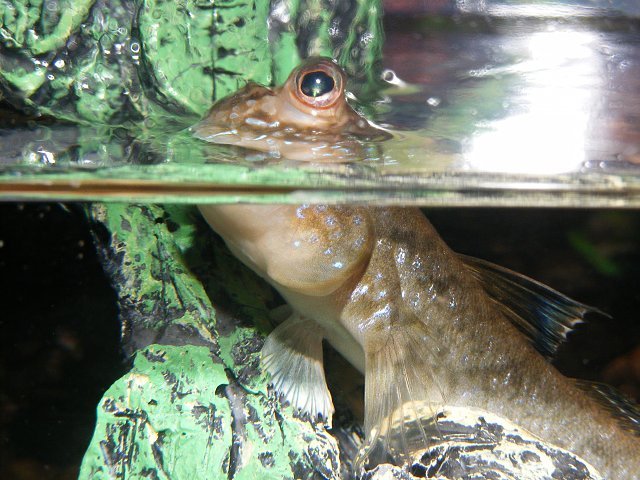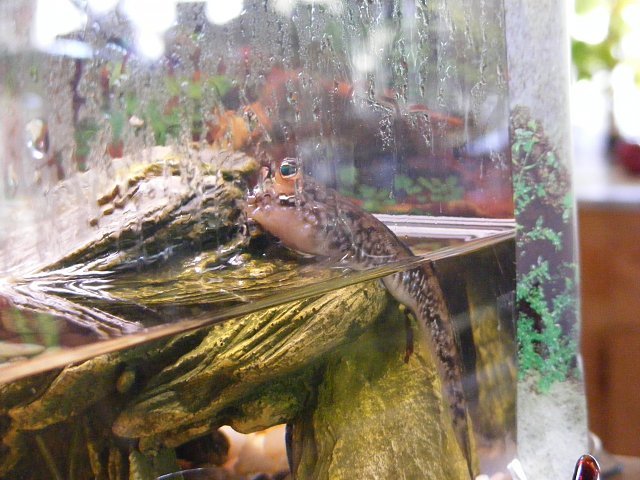http://fish.mongabay.com/species/Periophthalmus_barbarus.html said:
Habitat: brackish waters of tidal estuaries and mangrove swamps from the Red Sea to
Aquarium: A 36" (90 cm) or 35-45 gallon (132-170 L) tank is minimal. The tank must have dry areas, bank or beach is suggested or perhaps partially emerged wood. The water level should not exceed 12" (30 cm) deep. The air temperature should be the same as the water, so there should be a tight-fitting cover. Use plants that can tolerate brackish water such as young mangrove trees. Use a coral sand substrate. The tank should have an efficient filtration system as this species is a greedy eater.
Water chemistry: 7-8.5 (7.5), 10-25 dH (12), 77-86°F (25-30°C). The Mudskipper
requires a 1-2% addition of salt. Add 7.5-15 tsp. of salt per 10 gallons (10-20 g/10 L).
Social behavior: A territorial species that frequently leaves the water. Do not combine with small fish as they may be consumed.
Suggested companions: Anableps, Toxotes, Scats, Monos, Arius.
FOOD: Live; worms, crickets, flies, meal worms, beetles, small fish, crustaceans; flakes; tablets
Sexual differences: Unknown
Breeding techniques: Unknown
Breeding potential: 10. Has not been bred in captivity.
REMARKS: The species will leave water for long periods of time. They breathe through the many blood vessels located in the mucus wall of the mouth and pharynx. The Mudskipper can control gill opening to create more surface area, so more oxygen can be exchanged. The gills must remain moist at all times. The Mudskipper is well-known for its ability to climb small shrubs. The Mudskipper "walks" on its pectoral fins. They are capable of making small jumps from plant to plant. The Mudskipper can become very friendly and trusting around humans. Mudskippers are not usually available in aquarium stores.
Difficulty of care: 7. An interesting species that requires much maintenance





